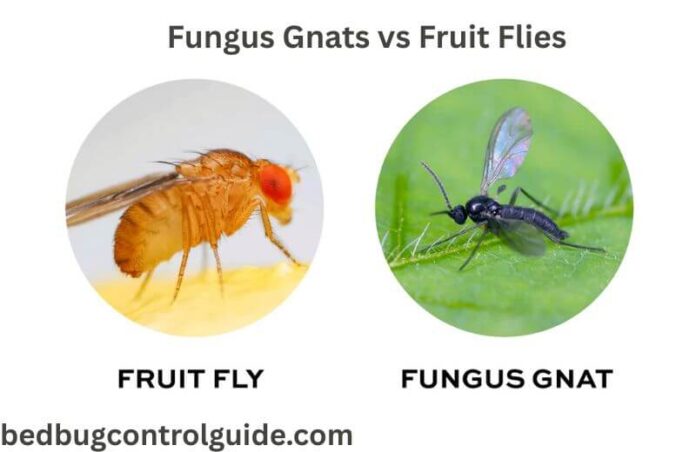Tiny insects buzzing around your home can quickly become frustrating. But are those pests fungus gnats or fruit flies? Knowing the difference is crucial because they thrive in different environments and require unique solutions to get rid of them. This guide will help you identify these pests, understand their behavior, and learn how to eliminate them effectively.
Key Differences of Fungus Gnats vs Fruit Flies
Appearance
At first glance, fungus gnats vs fruit flies may look similar, but upon closer inspection, their appearances have distinct differences. Understanding how to identify them can save your time and effort.
Fruit Flies
- Body color: Light tan to brown with a yellowish hue.
- Body shape: Rounded, stout, and housefly-like.
- Eyes: Large and striking red, making them stand out.
- Size: About 1/8 inch long, small but visible to the naked eye.
- Behavior: Often seen hovering around fruit bowls or garbage cans.
Fungus Gnats
- Body color: Dark gray to black, giving them a mosquito-like appearance.
- Body shape: Slender with long legs and delicate wings.
- Eyes: Small and dark; they do not have bright red eyes like fruit flies.
- Size: Slightly smaller than fruit flies, but their mosquito-like structure is distinct.
- Behavior: Commonly found around plants and damp soil.
Both types of pests are tiny, but their physical differences make them easier to tell apart if you know what to look for.
Behavior and Habitat
Identifying the behavior and preferred living spots of these insects will help you determine the cause of your infestation. Here’s a closer look at their behavior:
Fruit Flies’ Habitat
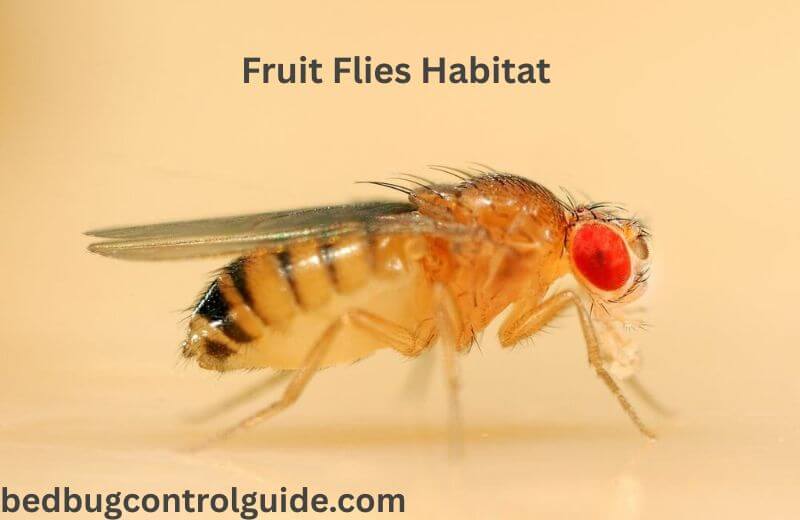
- Where do fruit flies live? They thrive near ripened or fermenting fruits, vegetables, and sugary liquids.
- Common spots: Garbage disposals, drains, overripe fruit on counters, and even compost bins.
- Flight pattern: Fruit flies are active fliers with erratic movement.
Fungus Gnats’ Habitat
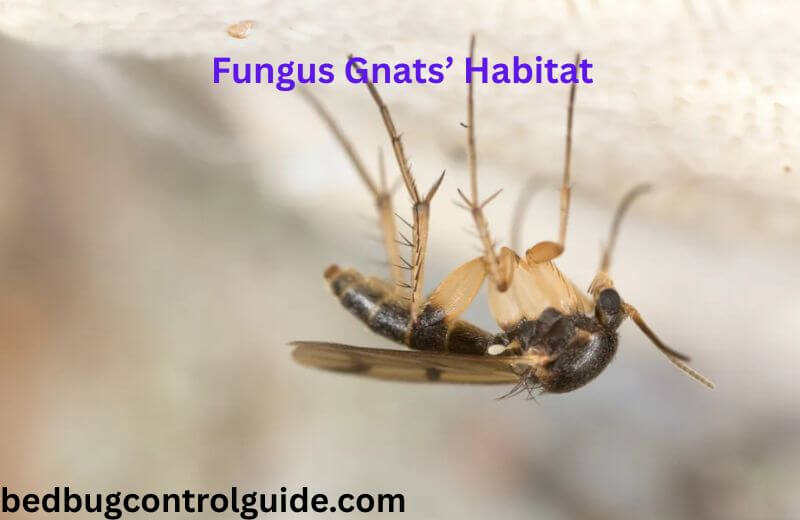
- Where do fungus gnats live? These pests prefer moist environments where fungi or damp organic material is present.
- Common spots: Overwatered plants, damp soil, and areas with decaying organic matter.
- Flight pattern: Fungus gnats flutter slowly in a more controlled manner compared to the erratic flight of fruit flies.
The different preferences in habitat play a major role in spotting and eliminating these tiny invaders.
Read our Latest Posts on Bed Bugs:
- How to Tell if You Have Bed Bugs in Your House?
- How to Get Rid of Bed Bugs Permanently at Home Naturally in 2025
- How Much Does it Cost to Get Rid of Bed Bugs? 2025 Pricing Guide
- What Do Bed Bugs Look Like?
- Early Signs of Bed Bugs on Mattress? Explained in 2025
Key Differences Table
Here’s a simple table summarizing the fungus gnats vs fruit flies comparison for quick reference:
| Feature | Fruit Fly | Fungus Gnat |
| Color | Tan to brown | Dark gray to black |
| Body Shape | Rounded, stout | Slender, mosquito-like |
| Eyes | Large, bright red | Small, dark |
| Preferred Habitat | Rotting fruit, drains, vegetables | Damp soil, overwatered plants |
| Flight Pattern | Erratic | Gentle, fluttering |
This side-by-side comparison makes it easier to identify the insects buzzing around your home.
How to Get Rid of Them: Fruit Flies & Fungus Gnats
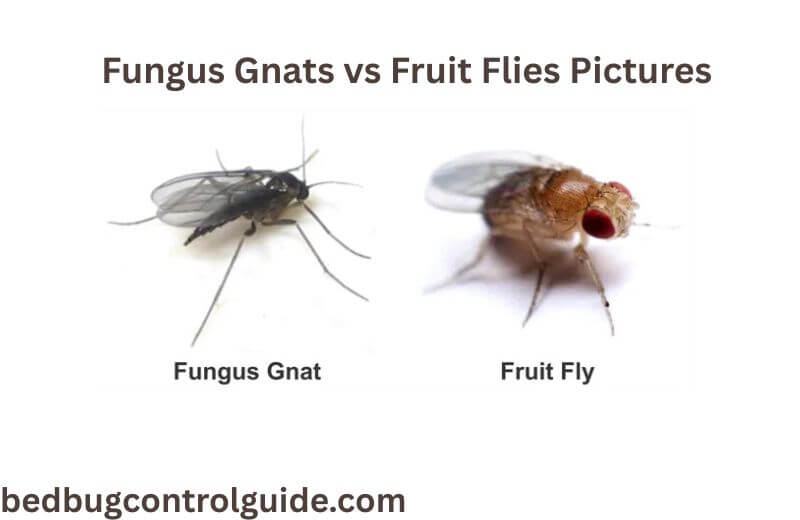
Getting Rid of Fruit Flies
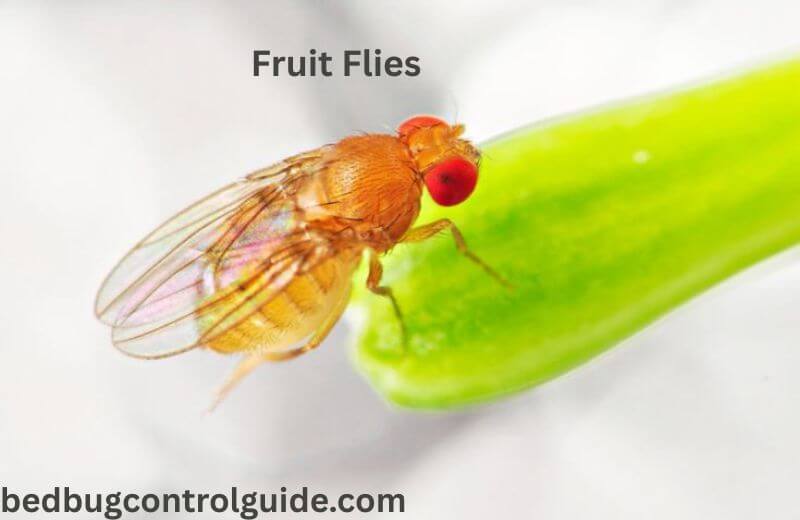
- Eliminate breeding sites: Store fruits and vegetables in the refrigerator and promptly clean countertops and garbage disposals.
- Fruit flies traps: Make a simple trap using a jar filled with apple cider vinegar and a few drops of dish soap. Cover the jar with a plastic wrap, poke small holes, and leave it near fruit fly-affected areas.
- Keep the area dry: Avoid leaving moist or sugary spots like spills around the house.
- Natural remedies: Clean drains regularly with boiling water or a natural, non-toxic drain cleaning solution.
Getting Rid of Fungus Gnats
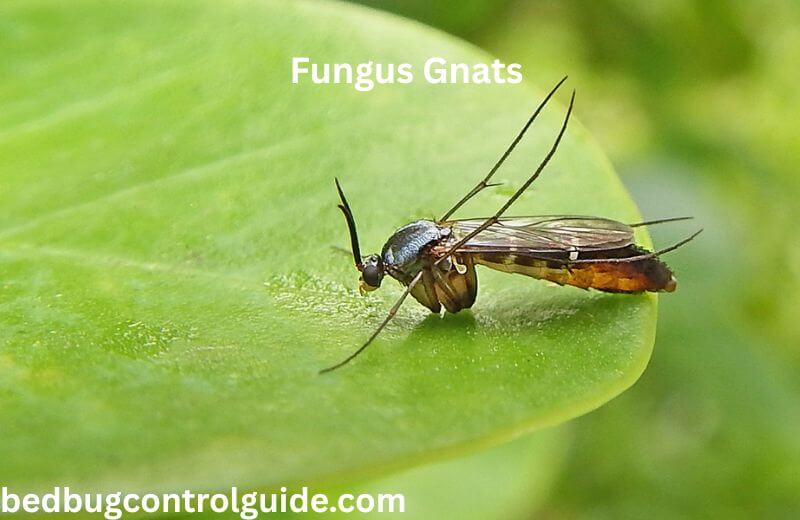
- Improve plant care: Reduce watering to prevent damp soil. Allow the topsoil to dry out between watering sessions.
- Sticky traps: Use yellow sticky traps to catch adult fungus gnats around your plants.
- Use biological controls: Introduce natural solutions like Bacillus thuringiensis (Bt), a bacterium that targets larvae in the soil.
- Repellents: Sprinkle a thin layer of sand or diatomaceous earth on top of the soil to deter gnats from laying eggs.
- Avoid overwatering: Check the moisture of your soil before watering your plants.
By targeting the preferred living and breeding spots, you can effectively eliminate these pests from your home.
Conclusion
Distinguishing between fungus gnats and fruit flies is the first step in tackling an infestation. Whether it’s drying out soil to stop gnats or cleaning your counters to eliminate fruit flies, each requires specific methods to eradicate them effectively. By following the preventive measures and control techniques outlined above, you can make your space pest-free.
Have you dealt with either of these pesky insects? Share your experiences below or tell us which solution worked best for you. Your insights might help others handle their infestations better!
FAQs
How to know if it’s fruit flies or fungus gnats?
Look for their habitats. Fruit flies thrive near rotting fruit and vegetables, while fungus gnats hang around overwatered plants and damp soil.
What is the lifespan of a fungus gnat?
The complete lifecycle of a fungus gnat spans about 3 to 4 weeks, depending on environmental conditions.
What kills fungus gnats instantly?
Use sticky traps for adults and hydrogen peroxide solutions (1 part peroxide to 4 parts water) poured over the soil to target larvae.
Why are fungus gnats so bad this year?
Warmer temperatures and overwatered plants encourage fungus gnat growth, leading to larger populations.
What temperature kills fungus gnats?
Extremely high or low temperatures outside their tolerance range (below 40°F or above 95°F) can kill fungus gnats.
Will fungus gnats go away on their own?
Without removing their food or breeding source—like moist soil or fungi—fungus gnats are unlikely to leave your plants alone.
Do coffee grounds repel gnats?
Yes, coffee grounds can act as a repellent by creating an inhospitable environment for them to breed.
How can you guess if the tiny bugs flying around your home are fungus gnats or fruit flies?
Observe their preferred locations and flight patterns. Fungus gnats stick to plants and soil, whereas fruit flies hover near kitchen counters and fruit.


